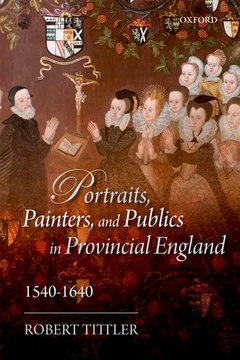Description
Portraits, Painters, and Publics in Provincial England, 1540--1640
Author: Tittler Robert
Language: English
Approximative price 158.58 €
In Print (Delivery period: 21 days).
Add to cart
Publication date: 01-2012
216 p. · 16.4x24.1 cm · Hardback
216 p. · 16.4x24.1 cm · Hardback
Description
/li>Contents
/li>Biography
/li>
Robert Tittler investigates the growing affinity for secular portraiture in Tudor and early Stuart England, a cultural and social phenomenon which can be said to have produced a 'public' for that genre. He breaks new ground in placing portrait patronage and production in this era in the broad social and cultural context of post-Reformation England, and in distinguishing between native English provincial portraiture, which was often highly vernacular, and foreign-influenced portraiture of the court and metropolis, which tended towards the formal and 'polite'. Tittler describes the burgeoning public for portraiture of this era as more than the familiar court-and-London based presence, but rather as a phenomenon which was surprisingly widespread both socially and geographically throughout the realm. He suggests that provincial portraiture differed from the 'mainstream', cosmopolitan portraiture of the day in its workmanship, materials, inspirations, and even vocabulary, showing how its native English roots continued to guide its production. Innovative chapters consider the aims and vocabulary of English provincial portraiture, the relationship of portraiture and heraldry, the painter's occupation in provincial (as opposed to metropolitan) England, and the contrasting availability of materials and training in both provincial and metropolitan areas. The work as a whole contributes to both art history and social history; it speaks to admirers and collectors of painting as well as to curators and academics.
Introduction. 1. English Portraiture in Context. 2. Locating the Public. 3. Provincial Painters. 4. Painters' Resources. 5. Heraldry and Portraiture. 6. The Provincial Vocabulary: 'Props' and their Meaning. 7. Varieties of Regional Experience. Conclusion. Bibliography.
Robert Tittler has researched, taught, and published for over forty years, producing ten books and some fifty scholarly articles and essays on the urban, political, social, economic, and cultural history of the Tudor and early Stuart eras. He prefers to work at the edges of his subjects rather in their centres, hoping to knit those subjects together with the edges of adjacent issues. His studies of town halls and political authority (Architecture and Power, 1991), of the impact of the Reformation on urban political life (The Reformation and the Towns, 1998), the experiences of individual urban residents in relation to the whole (Townspeople and Nation, 2001), or of portraiture and civic identity (The Face of the City, 2007), all work towards those ends, as does this present book.
© 2024 LAVOISIER S.A.S.




